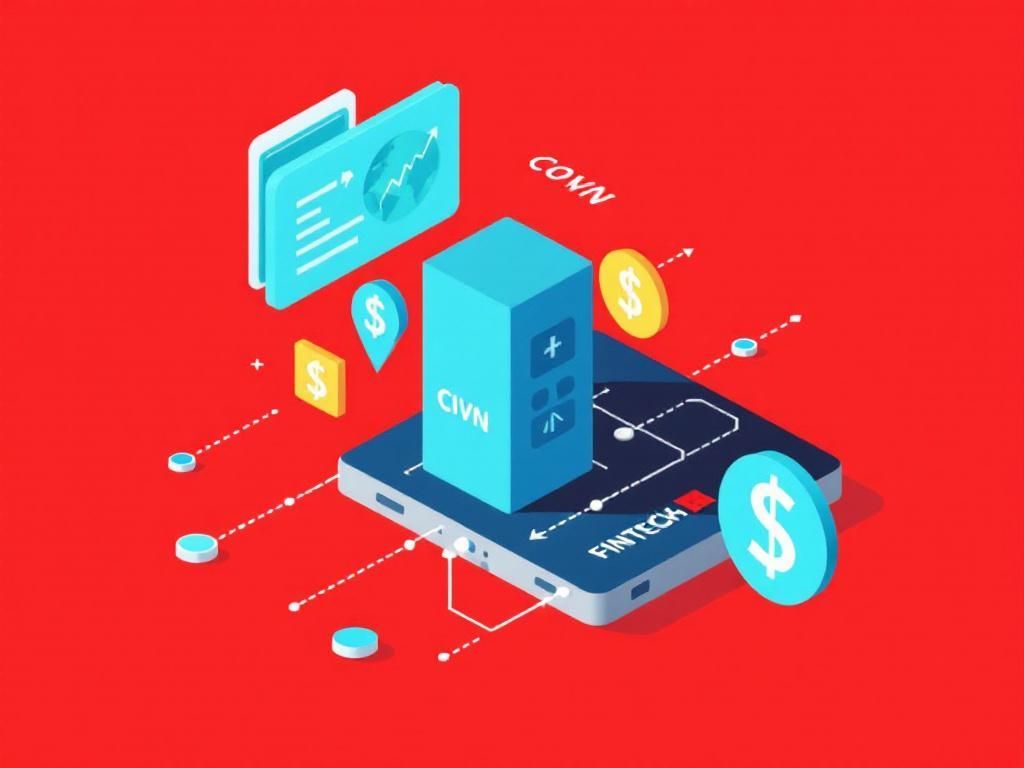Elevate Your Fintech Startup: Mastering UI/UX Design in 2025
Discover essential UI/UX design strategies for fintech startups in 2025 to enhance user experience and drive success.

Table of Contents
Elevate Your Fintech Startup: Mastering UI/UX Design in 2025
The world of financial technology (fintech) is evolving rapidly, and as we step into 2025, the importance of user interface (UI) and user experience (UX) design cannot be overstated. In a highly competitive market, where customer expectations are continuously rising, providing an intuitive and engaging digital experience is crucial for fintech startups looking to stand out. This article delves into the essential principles of UI/UX design, the latest trends, and practical tips to elevate your fintech startup.
The Importance of UI/UX in Fintech
UI/UX design is the backbone of any successful digital product, especially in the fintech sector. It encompasses everything from the visual layout of your app to the overall interaction your users have with your service. Here are several reasons why UI/UX design is fundamental in fintech:
- Enhanced User Engagement: A well-crafted UI/UX design creates a more engaging experience, leading to higher user retention rates.
- Increased Trust and Credibility: Users are more likely to trust a platform that is visually appealing and easy to navigate. Good design instills confidence in users that their financial data is safe.
- Improved Conversion Rates: Streamlined design can make processes like signing up, making transactions, or investing more intuitive, boosting overall conversion rates.
- Competitive Advantage: As more fintech startups emerge, exceptional UI/UX design can be a key differentiator that sets your product apart from the competition.
Core Principles of UI/UX Design
To create a successful fintech application, here are some core principles of UI/UX design you should adhere to:
1. Understand Your Users
Conduct thorough user research to understand who your target audience is and what their needs are. This can be achieved through interviews, surveys, and usability testing. Building user personas can also help in tailoring your application to meet user expectations.
2. Simplicity is Key
Financial products can often be complex; however, your design should aim for simplicity. Users should be able to navigate your app without confusion. Strive for a clean layout with clear calls to action (CTAs).
3. Consistency
Maintain consistency in your design elements such as fonts, colors, and buttons. This not only reinforces brand identity but also helps users to feel comfortable and familiar with your app.
4. Accessibility
Your design should be inclusive and accessible to users of all backgrounds, including those with disabilities. Use color contrasts, alt texts, and intuitive navigation to ensure that your application can be used by everyone.
5. Feedback and Response
Incorporate mechanisms to provide feedback to users upon interaction. Simple animations, loading indicators, or alerts can greatly enhance the usability of your application.
Trends in UI/UX Design for Fintech in 2025
The landscape of UI/UX design is continuously changing. Here are some trends we can expect in 2025:
1. Dark Mode
Dark mode has gained immense popularity across various applications. It’s not just a visual preference but also enhances battery life and reduces eye strain for users. Offering a dark mode option in your fintech app can improve user satisfaction.
2. Voice User Interface (VUI)
With the rise of smart speakers and voice assistants, incorporating a voice user interface in your fintech app can offer a hands-free experience, making tasks like checking balances or making transactions easier for users.
3. Micro-interactions
Micro-interactions such as notifications, button animations, and feedback confirmations add a layer of fun and engagement to the user experience. Well-executed micro-interactions can make your fintech app feel more dynamic and responsive.
4. Augmented Reality (AR)
AR can be utilized in fintech applications for features like interactive spending reports or virtual financial advisors, making complex financial data more digestible and engaging.
5. Personalization
Users appreciate tailored experiences. Leveraging AI for data-driven personalization in your app can improve user engagement and satisfaction. This could include personalized dashboard views, alerts based on spending habits, and custom investment advice.
Implementing Best Practices in UI/UX Design
To implement effective UI/UX designs in your fintech startup, consider the following best practices:
1. Design with Mobile in Mind
As mobile banking becomes increasingly prominent, ensure that your fintech applications are mobile-responsive. Prioritize mobile-first design principles to cater to users on-the-go.
2. Utilize User Testing
Before launching your product, conduct rigorous user testing to identify usability issues. Gather feedback and iterate on your designs to make improvements.
3. Collaborate with Experts
If possible, enlist the help of UI/UX design experts. Their experience can provide critical insights and help elevate your application’s design.
4. Stay Updated with Technology
Keep an eye on technological advancements and how they can be integrated into your design. This includes understanding the frameworks, tools, and technologies that can enhance your fintech app.
Case Studies: Successful UI/UX in Fintech
To illustrate the impact of excellent UI/UX design, here are a few fintech companies that have excelled in this domain:
| Company | Strengths | Impact |
|---|---|---|
| Square | Simple interface, easy navigation | Streamlined payment processing |
| Robinhood | User-friendly, engaging investment experience | Attracted new and young investors |
| Mint | Visual representation of financial data | Enhanced user engagement and financial awareness |
Conclusion
As we navigate through 2025, mastering UI/UX design is not just an option but a necessity for fintech startups. By understanding user needs, adhering to core design principles, and staying updated with the latest trends, you can create a fintech product that not only meets but exceeds user expectations. Investing in UI/UX design is investing in your startup’s future success. Embrace these strategies, and you will be well on your way to elevating your fintech startup in a crowded digital landscape.
FAQ
What is the importance of UI/UX design for fintech startups?
UI/UX design is crucial for fintech startups as it directly impacts user satisfaction, retention, and overall engagement. A well-designed interface can simplify complex financial processes, making them more accessible to users.
How can fintech startups improve their user experience in 2025?
Fintech startups can enhance user experience by conducting thorough user research, implementing intuitive navigation, and leveraging modern design trends like micro-interactions and personalization to meet user expectations.
What trends in UI/UX design should fintech startups watch for in 2025?
Key trends to watch in 2025 include the rise of dark mode, voice user interfaces, augmented reality elements, and an increased focus on accessibility to cater to diverse user needs.
How does UI/UX design impact customer trust in fintech platforms?
Effective UI/UX design fosters customer trust by promoting transparency, security, and ease of use, which are vital for financial transactions. Users are more likely to trust a platform that looks professional and is easy to navigate.
What are some common UI/UX design mistakes fintech startups should avoid?
Common mistakes include overcomplicating the interface, neglecting mobile optimization, failing to conduct user testing, and ignoring feedback, all of which can lead to poor user experiences.
How can fintech startups balance aesthetics and functionality in their UI/UX design?
Fintech startups can balance aesthetics and functionality by prioritizing user-centered design principles, ensuring that visual elements enhance usability, and conducting iterative testing to refine both design and functionality.








